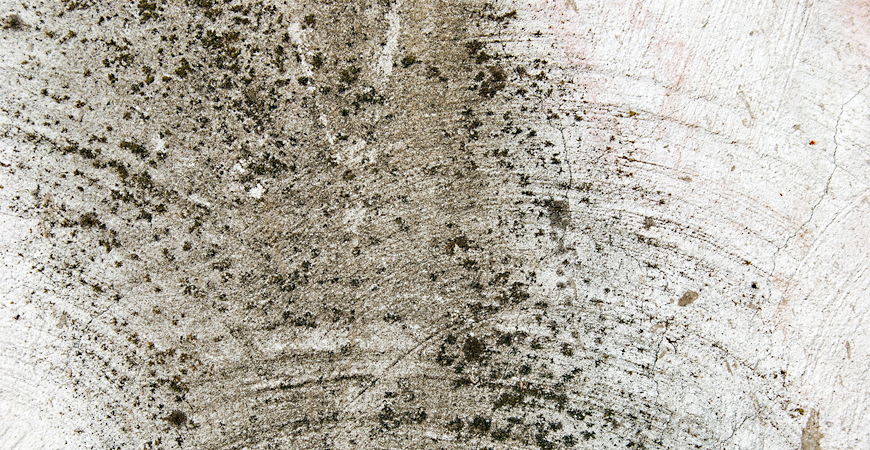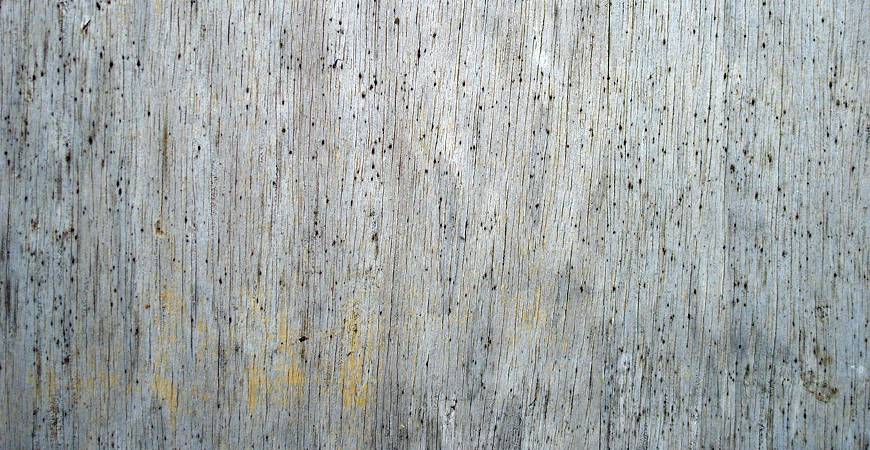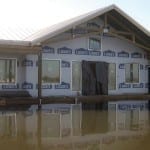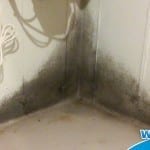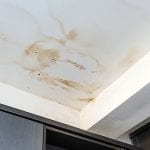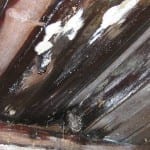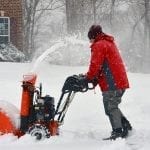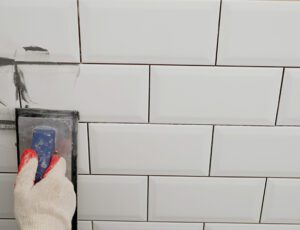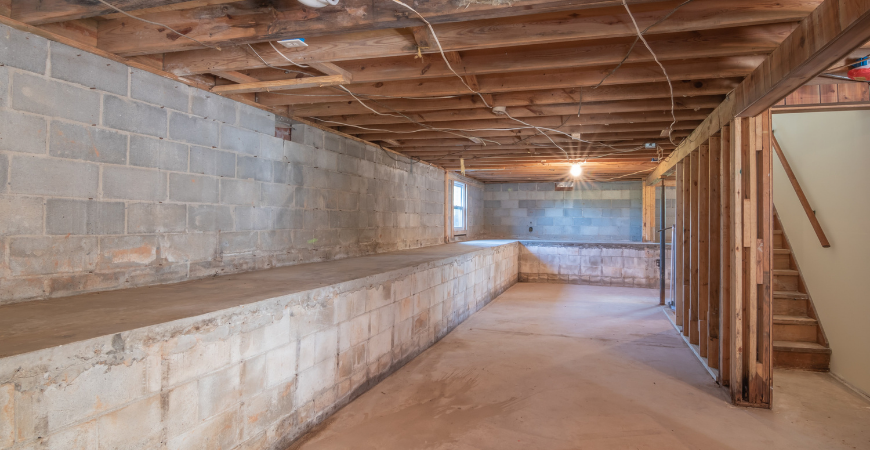
DIY Basement Waterproofing: Waterproof Your Basement Walls and Flooring
Heavy rains or snowmelt can do a number on your basement walls and foundation if it’s not waterproofed. In fact, if left untreated, stained foundation walls and pooled water can cause mold and mildew growth. Here we cover basement waterproofing tips and ways to keep your downstairs dry.
Is it difficult to waterproof a basement?
It depends on the current condition of your basement and the type of waterproofing required – interior or exterior. Some basement waterproofing projects are DIY; others require help from a foundation contractor.
Home improvement expert Bob Vila mentions, “While builders take steps to waterproof basements during construction, over time, a house can settle. This can create cracks in basement walls. When the soil outside becomes saturated, water can seep through these cracks. The best long-term solution is to waterproof the walls.”
Interior waterproofing with interior masonry sealant
If you see fine cracks in a foundation wall that look damp or leak slowly, try an interior masonry sealant. Keep in mind that interior masonry sealant works on a wall that is unpainted.
Masonry sealant comes in one-gallon and five-gallon buckets. Additionally, you’ll need a good-quality paintbrush or roller for sealant application.
What is the repair cost?
The price will vary depending on product quality, brand, and the number of coats required. A rule of thumb is between $50 and $500 per 100 sq. ft. of foundation wall space.
Plus, you’ll want to add in the cost of a quality paintbrush or roller for your application.
Interior waterproofing with an interior floor drain system
If applying an interior masonry sealant doesn’t fix the leak, you may need to install an interior floor drain system. Also, wide cracks or numerous cracks on your basement walls accompanied by dampness, stains, or seepage, is another good reason to consider a floor drain system.
Floor drain system installation
Installing a floor drain system is a labor-intensive job, which requires a jackhammer and concrete saw. A homeowner can do this project, but it’s usually best to hire an experienced professional.
Here’s an overview of the process:
- Excavate a shallow trench along the interior perimeter of the basement.
- Fill the trench with drain tile and pea gravel.
- Install a sump pump to move water to a collection pit.
- Fill the trench with concrete around narrow grates.
- Install plastic panels over wall leaks to direct water to the grate.
How much does it cost to install a floor drain system?
Installation by a foundation contractor can run in the thousands of dollars. Doing the project yourself can save on labor costs, thus bringing the total price down.
Exterior waterproofing
The best way to stop basement leaks is to waterproof your basement from the outside. Keep in mind the project is labor-intensive and involves excavating large amounts of dirt away from the exterior and digging a deep trench (7 to 8 feet) around the foundation.
Hire a contractor-
Since it is labor-intensive, it’s best to hire a contractor. Additionally, some local governments may require you to hire a professional to do the job, so be sure to double-check.
Furthermore, you may need to obtain a permit. Contact the city or county where you live to apply and receive one.
Exterior waterproofing process-
When it comes to exterior waterproofing, a drain tile, a sump pit, and a sump pump will be installed.
The pit and pump help to collect water and move it to the soil surface. The sump pit can be installed inside, beneath, or outside the house.
During the drain tile installation, ask the contractor to inspect the exterior foundation walls for cracks. If there are cracks, then patch and seal them.
Apply a mortar-based product to seal large cracks once the cracks are patched. When the mortar is dry, brush on an exterior masonry sealant.
How much does exterior waterproofing cost?
It can cost $10,000 or more, but it’s the most effective way to stop basement leaks.
What time of year is best to waterproof a basement?
Current weather conditions may affect the repair methods.
In spring, you may have to pump water from the work site due to heavy rains. And the site can become a huge mess. On the other hand, winter’s constant freezes and thaws increase the chance of a dangerous cave-in.
The best time to waterproof a basement is during the summer because of the nicer weather. Schedule your foundation contractor to tackle a basement waterproofing job in the warm, dry months of the year.
Why should I waterproof my basement?
Home improvement expert Bob Vila says, “Because they’re built below grade, basements tend to take on water. You may notice moist basement walls from time to time, water puddles here and there, or—worst-case scenario—flooding during the rainy season. Humid, damp, or downright wet basements can result in peeling paint, mold and mildew growth, rotted wood, and damage to stored items.”
How can I keep mold and mildew out of my basement?
Stamp out basement mold and mildew with Wet & Forget Indoor Mold + Mildew Disinfectant Cleaner.
Mold has been linked to a variety of health issues- most notably upper respiratory tract problems. So, it’s important to eliminate mold and mildew on basement surfaces as soon as possible.
Wet & Forget Indoor kills mold and mildew. Plus, it cleans, disinfects, and deodorizes your home’s indoor surfaces. No scrubbing, rinsing, or bleach is needed. Just spray and wipe!
Here’s how to apply Wet & Forget Indoor:
- Spray Wet & Forget Indoor on any indoor hard, non-porous surface that has mold and mildew growth.
- Then wait for 10 minutes.
- After 10 minutes, wipe the surface with a dry cloth or allow it to air-dry.*
*Rinse and wipe all surfaces that touch food like countertops, appliances, tables, and stovetops before use.
Wet & Forget Indoor also inhibits mold and mildew re-growth, which gives you time to track down the source of basement dampness and remedy the problem.
Although basement waterproofing can be costly, not waterproofing could cost you a lot more down the road. Consult with a contractor to see if your basement will withstand spring’s rain and winter’s snowmelt.
Bonus tips to prevent water from making its way to the basement:
- Remove landscape plants that grow next to the basement. Since they require water, excess water may seep into the basement.
- Inspect gutters and downspouts. Repair those that do not direct water away from your foundation.
- Grade your yard away from the foundation at a two percent slope or more.

